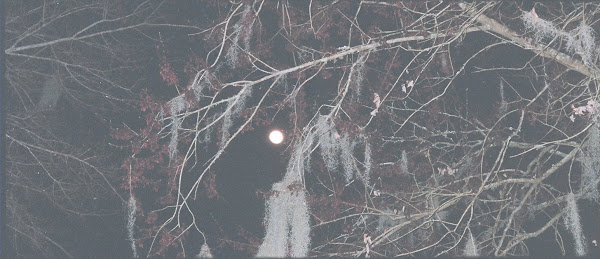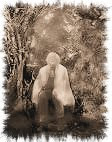This is really nothing new. This kind of research has been going on since atleast the 1950s.
That is how LSD got its start, not at Woodstock or in the Haight-Ashbury. The substance, found so interesting by the man who discovered it, Albert Hoffman, was sent to several psychiatrists around the world. That's how it began and many of those psychiatrists became some of the earliest neurotheologists.
Can "neurotheology" bridge the gap between religion and science?
Posted Thursday, April 26, 2007, at 7:23 AM ET
Looking back, it was the intellectual high point of my summer: Ten science and religion reporters sitting inside the divinity building at Cambridge University, contemplating the essence of a raisin. As the hypnotic voice of the speaker, an expert on Buddhist meditation, lulled us from the here and now, I placed the wrinkly thing on my tongue, exploring its peaks and valleys until, all of a sudden, I broke through the linguistic cellophane. The raisin ceased to be a raisin or anything with a name. It had no history as a fruit grown on a vine and shipped to market; it evoked no memories of the little Sun-Maid boxes my mother packed in my lunch pail or of a particularly good glass of cabernet sauvignon.* It just was.
My colleagues—we were in England for a journalism fellowship sponsored by the John Templeton Foundation, which hopes to find God in science—were having their own quiet epiphanies. After days of talks by physicists and theologians seeking cosmological justification for their spiritual beliefs, the close encounter with the raisin brought us back to earth. God was not to be found in the perfect wheeling of the cosmos, the quantum ambiguity of the atom, or the fortuity of the Big Bang, but in the electrical crackling of the human brain.
If recent findings in "neurotheology" hold up, our meditating neurons, locked in the state called mindfulness, were radiating gamma waves at about 40 cycles per second, beating against the 50-hertz hum of the fluorescent lights. At the same time, parts of our cerebral cortex were growing infinitesimally thicker—another effect that researchers have associated with trancelike states. In the neurological search for the spiritual, there is no shortage of data. But pile it as high as you like, and you're left staring across the same divide. Depending on your predisposition, you can interpret all these experiments in two different ways. The believers take them as scientific evidence for the reality of their visions, while the atheists claim more proof that God is all in your head.
Two years ago, Sara Lazar, at Massachusetts General Hospital, used magnetic resonance imaging to show that the brains of longtime meditators were different from those of a control group: They had slightly bigger regions devoted to attentiveness and the processing of sensory information. What the study couldn't say was which way the causal arrow points.
Does meditation fatten brain tissue, or are people with beefier cortexes more likely to meditate? For that matter, the changes might have been caused by something else altogether—maybe meditators are less likely to drink Pepsi One and more likely to eat their vegetables. But even if contemplating a raisin does pump up your neurons, that should come as no surprise. London cabbies have been found to have unusually large hippocampuses, a piece of the brain important for making mental maps. So do mice trained to run mazes. If the mind is what the brain does, any kind of exercise is bound to leave a physical trace.
Other studies have been more specific. In an ecumenical breakthrough, Andrew Newberg at the University of Pennsylvania found that praying Franciscan nuns and meditating Buddhist monks generate similar brain scans: The frontal lobe, associated with focus and concentration, lights up. At the same time, the parietal lobe, which integrates sensory information, goes dim.
This high-tech imagery has a way of stating the obvious: As you fix your thoughts on the otherworldly, you lose contact with your immediate surroundings. Likewise, Newberg discovered stirrings in language regions for the nuns, who were meditating on a Bible verse, and in visual regions for the monks, who were imagining a sacred object. When he scanned Pentecostals speaking in tongues, both the frontal lobe and the language center blacked out as they abandoned themselves to a proto-linguistic frenzy. If he'd lit a stick of incense, the olfactory bulb would have joined the show.
Reductive as these studies are—that is the whole point of neuroscience—there has been no loud objection from religious believers. They just take the results as evidence that the gods designed brains to be efficient spiritual resonators. Hence the eagerness of Tibetan monks, including His Holiness the Dalai Lama, to participate in brain-wave experiments at Richard Davidson's lab at the University of Wisconsin. Donning chain-mail hoods of electrodes and contemplating universal peace and love, the monks show EEG patterns that appeared to be laced with higher than normal levels of gamma waves—even after they stopped meditating.
These higher-frequency vibrations have been proposed as a mechanism for synchronizing separate brain modules—auditory, visual, etc.—to produce a unified perception of the world. How the brain does this is what philosophers call "the binding problem." Maybe the monks can bind these parts so tightly that everything seems like one—a mystical short circuit.
Out of politeness, perhaps, or a hope for future Templeton grants, neurotheologists tend to play down the most direct implication of their research—that religious ecstasy is an illusion. Harder to finesse are studies suggesting that the visions of mystics like St. Paul and Sister Teresa are a kind of brain damage—temporal lobe epilepsy, or TLE for short. The disorder found its way into literature as long ago as 1869 when Dostoevsky, in The Idiot, described epileptic feelings of "a wonderful inner light." In his novel Lying Awake, Mark Salzman tells of a cloistered Carmelite nun who must decide whether to let a neurosurgeon go after the cerebral misfirings that caused disabling headaches, while letting her talk with God.
For those not prone to seizures, Michael Persinger of Laurentian University promises to induce similar symptoms by scrambling the brain with magnetic fields. After donning a helmet wired with electromagnets, some subjects reported experiences they described as mystical, or at least misty. When Richard Dawkins, author of The God Delusion, put on the hood, it only made him a little dizzy. Persinger was quick to note that Dawkins had scored way below average on a psychological questionnaire measuring temporal lobe sensitivity—hints of a neurobiological correlate for atheism. (Click here for a Slate writer's first-hand account of Persinger's "God machine" and other mystical neurotechnologies.)
Persinger hypothesizes that the electromagnetic disruption causes one hemisphere of the brain to cut loose from the other and sense it as a separate presence, your invisible friend. Those who remember Julian Jaynes' 1976 book, The Origin of Consciousness in the Breakdown of the Bicameral Mind, may read this with a sense of déjà vu (possibly another temporal lobe disorder). Jaynes, who taught psychology at Princeton, proposed that as recently as 3,000 years ago, the left and right hemispheres were like two separate beings. Signals from the right brain were interpreted by the left as the voice of God. It was a merger between these cranial cohabitants that formed the self with its inner voice of reason. Maybe a spontaneous reversal of this great leap forward gives us holy men. Then again, maybe the gods created the right hemisphere for use as a spiritual transceiver.
So it goes, round and round. Either the brain naturally or through a malfunction manufactures religious delusions, or some otherworldly presence speaks to homo sapiens through the language of neurological pulses. Hot in pursuit of this undecidable proposition, neurotheology will keep on churning out data—but when it comes to the biggest questions, it will never have much to say.
Correction, April 26, 2007: This piece originally misidentified Sun-Maid as "Sunkist." (Return to the corrected sentence.)
George Johnson, a 2005 Templeton-Cambridge Journalism Fellow, is the author of Fire in the Mind: Science, Faith, and the Search for Order.
Article URL: http://www.slate.com/id/2165026/
Dear Readers, please do not assume that you understand anything you read on this blog. (:-)


.jpg)

.jpg)
.jpg)


